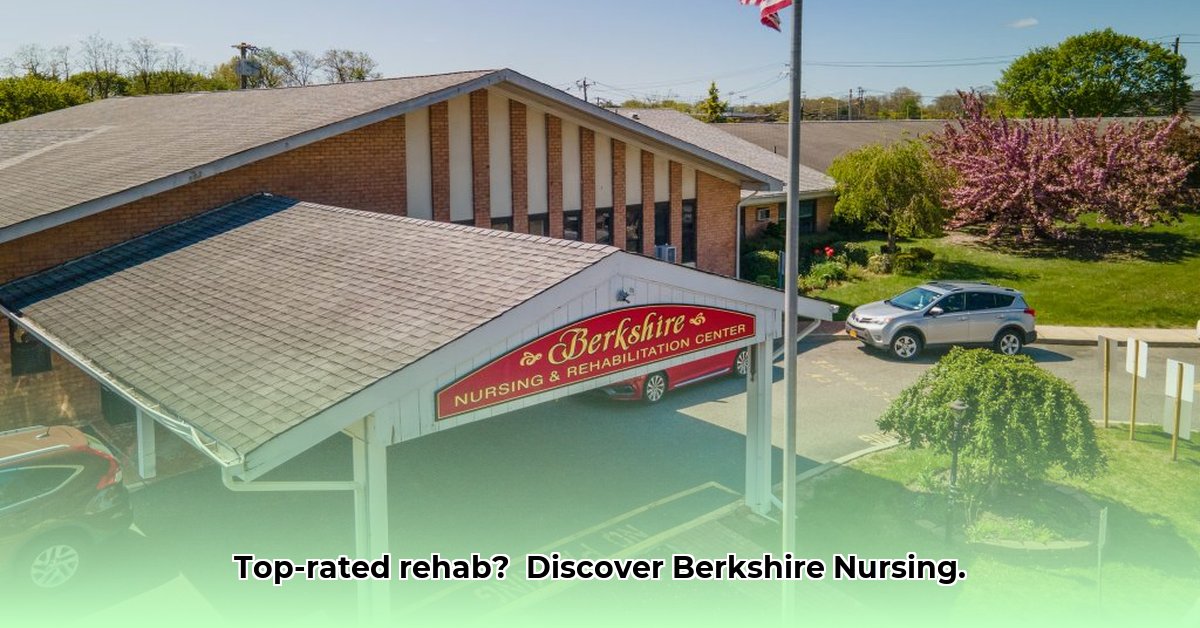
A Comprehensive Review of Berkshire Nursing and Rehabilitation Center
Picking the right long-term care facility is a significant decision. This review of Berkshire Nursing and Rehabilitation Center aims to provide a balanced assessment, combining objective data with observations to help families make informed choices. We'll examine Berkshire's strengths and areas needing improvement, focusing on both short-term rehabilitation and long-term care.
Positive Aspects & Key Performance Indicators
Berkshire demonstrates strong performance in certain areas. Their preventative health initiatives are noteworthy. For example, a remarkable 99.4% of residents receive annual flu vaccinations, significantly exceeding both state (94.7%) and national (94.8%) averages. This proactive approach underscores their commitment to resident well-being. Their strong financial standing, with a spotless record over the past three years (no fines or payment issues), suggests responsible management and operational efficiency. Furthermore, planned facility improvements signal a dedication to maintaining comfortable and modern surroundings.
However, a balanced perspective requires acknowledging areas where improvements are needed. While the facility fosters a welcoming atmosphere, key performance indicators in other areas raise questions.
Areas Requiring Improvement
Berkshire’s short-term rehabilitation success rate is below average. Only 40.8% of residents undergoing rehabilitation returned home, compared to 46.3% statewide and a national average of 50.4%. This suggests potential for improvement in their rehabilitation programs. Additionally, infection rates leading to hospitalization (7.7%) are slightly higher than state (7.3%) and national (7.0%) averages. Although emergency room visits per 1,000 residents are lower than the national average (10.2% vs. 11.9%), they are slightly above the state average (9.6%). These factors warrant further investigation and potential improvements in preventive care and treatment strategies.
The average time nurses spend with each resident (3 hours 22 minutes) is below both state (3 hours 36 minutes) and national (3 hours 46 minutes) averages. While not drastically low, this could impact the level of individual attention residents receive. Further research is needed to assess the impact of this on patient outcomes. Similarly, the percentage of residents able to perform self-care (85%) is slightly lower than state (85.2%) and national (85.9%) averages, suggesting areas for focused attention.
Long-Term Care: A Mixed Picture
In long-term care, the picture is more nuanced. Emergency room visits per 1,000 residents are slightly better than the national average but still higher than the state average. This highlights an ongoing need for evaluation and optimized long-term care strategies.
Bridging the Gap: Understanding Discrepancies
A discrepancy exists between Berkshire’s self-reported resident satisfaction and the objective data analyzed. An independent resident satisfaction survey would provide valuable insight into the resident experience and help explain these differences. Further investigation is crucial to fully understand the causes of these discrepancies and develop targeted improvement strategies. The planned technological upgrades are promising, but their impact needs monitoring and evaluation to ensure they translate into tangible benefits for residents.
A Path Forward: Collaborative Improvement
The future of Berkshire hinges on continuous improvement. This necessitates a collaborative effort involving management, regulatory bodies, residents, and their families. A structured approach is needed, focusing on data-driven improvements and transparent communication.
Actionable Steps for Improvement
Implement Data-Driven Quality Improvements: Utilizing key performance indicators (KPIs) such as infection rates, readmission rates, and resident satisfaction scores to track progress and guide improvements.
Conduct Thorough Resident Satisfaction Surveys: Employing standardized, independent surveys to gain insights into residents' experiences and identify areas for improvement.
Improve Staffing Levels and Nurse-to-Patient Ratios: Exploring strategies to increase staffing levels, potentially through recruitment incentives or adjusted staffing models, to ensure adequate resident care.
Enhance Infection Control Protocols: Implementing and rigorously enforcing robust infection control protocols, including staff training, regular facility sanitation, and potentially investment in advanced technologies.
Optimize Discharge Planning: Developing individualized discharge plans for each resident considering their unique medical needs, family support systems, and post-discharge resources.
Proactively Manage Emergency Room Visits: Analyzing emergency room visit data to identify patterns and develop preventative measures to minimize future occurrences.
Invest in Ongoing Staff Training and Development: Providing regular training for staff on best practices in infection control, patient care, and emergency management.
Implement a Comprehensive Data Analytics System: Establishing a system for continuous monitoring and analysis of key performance indicators to inform ongoing improvement efforts.
This multi-pronged approach requires collaboration among management, regulatory bodies, and residents' families. By prioritizing transparency and data-driven decision-making, Berkshire can enhance its quality of care while maintaining its welcoming atmosphere.